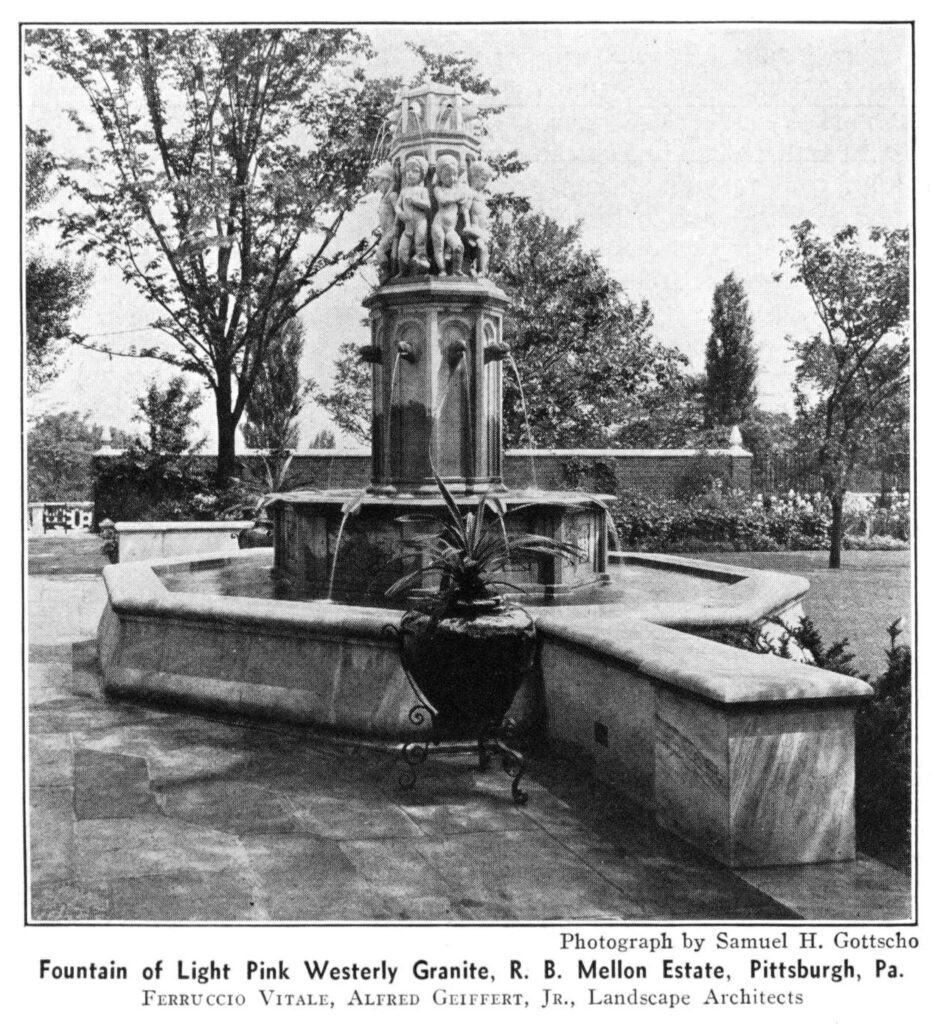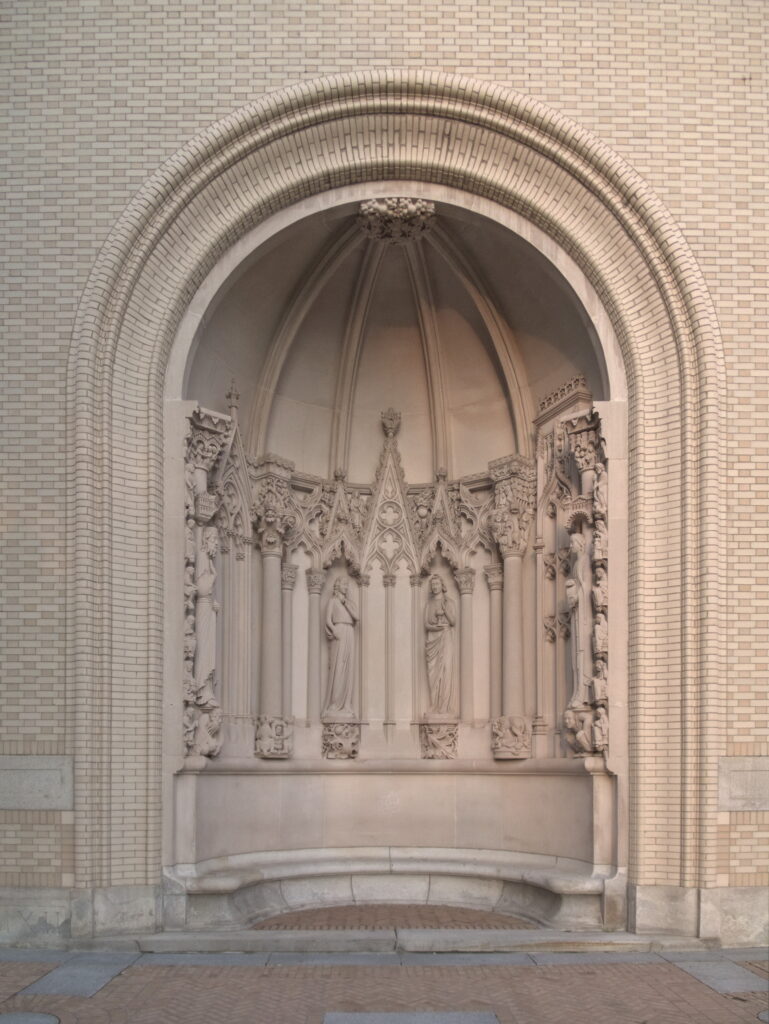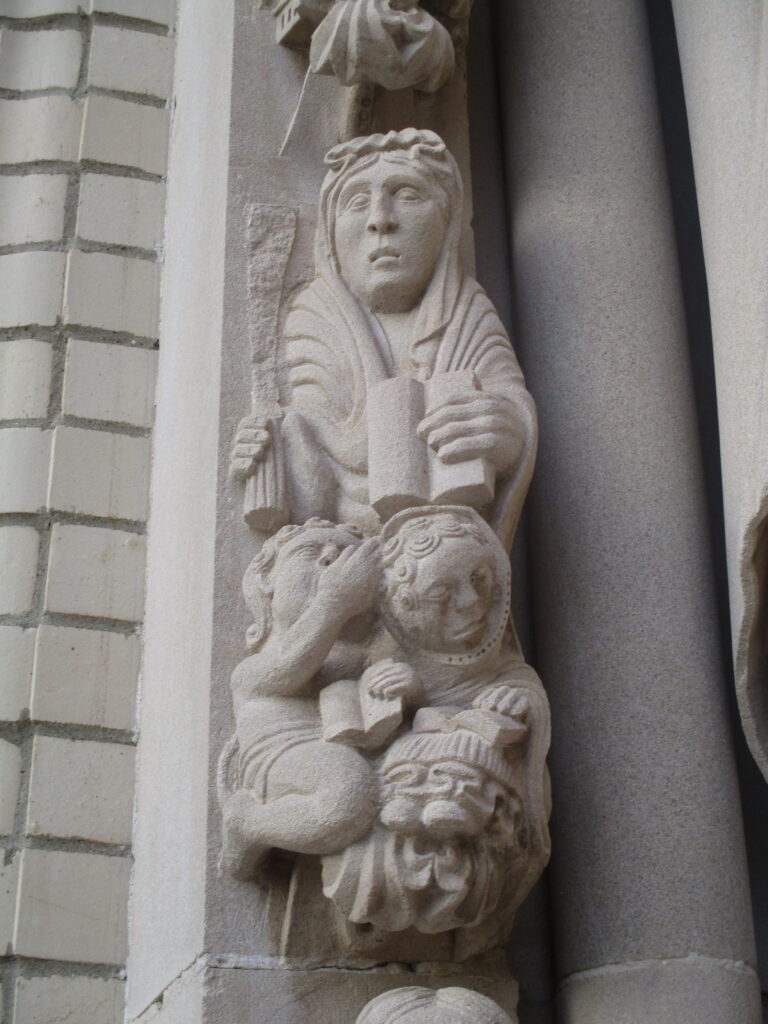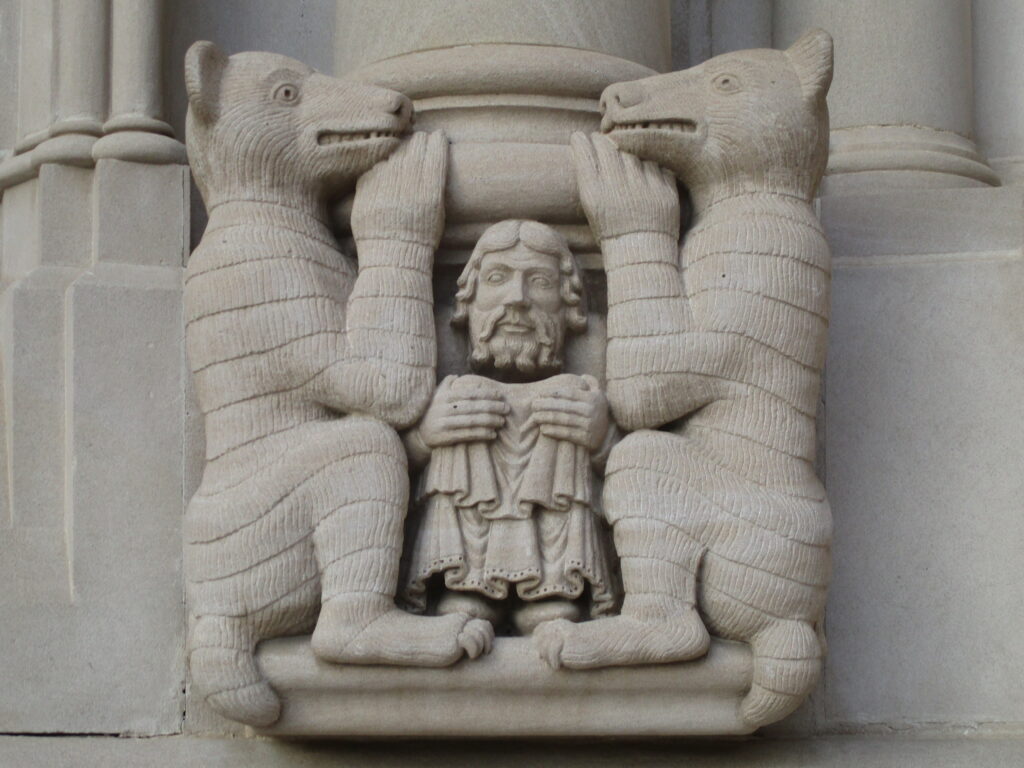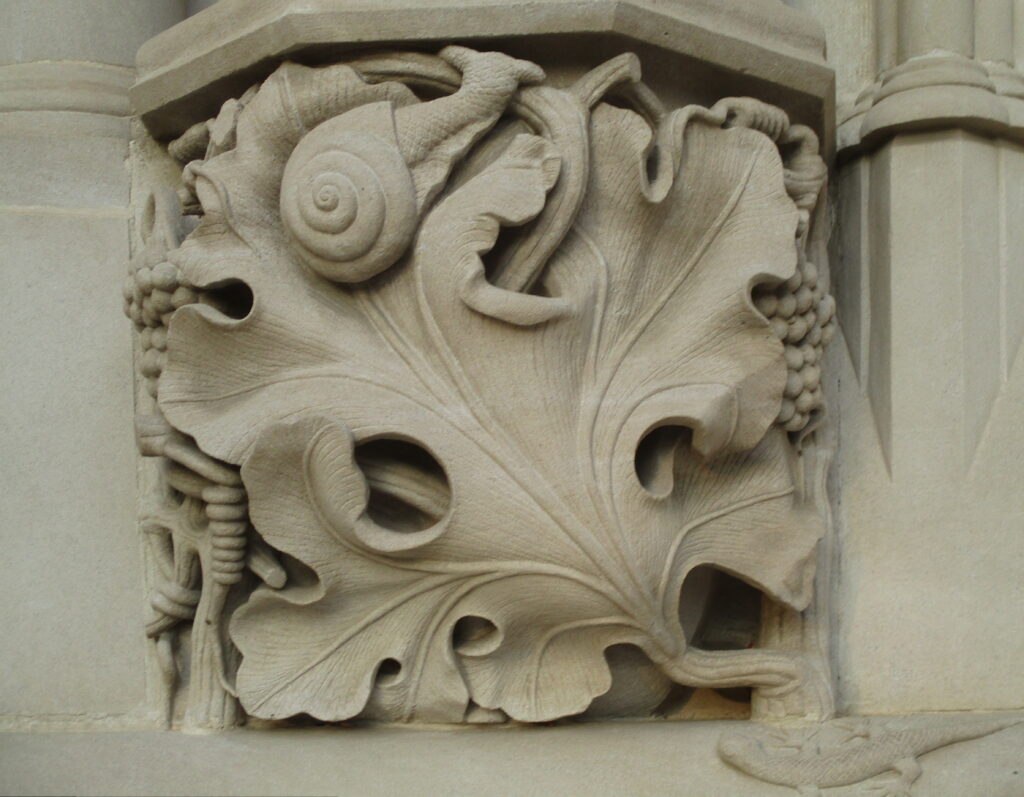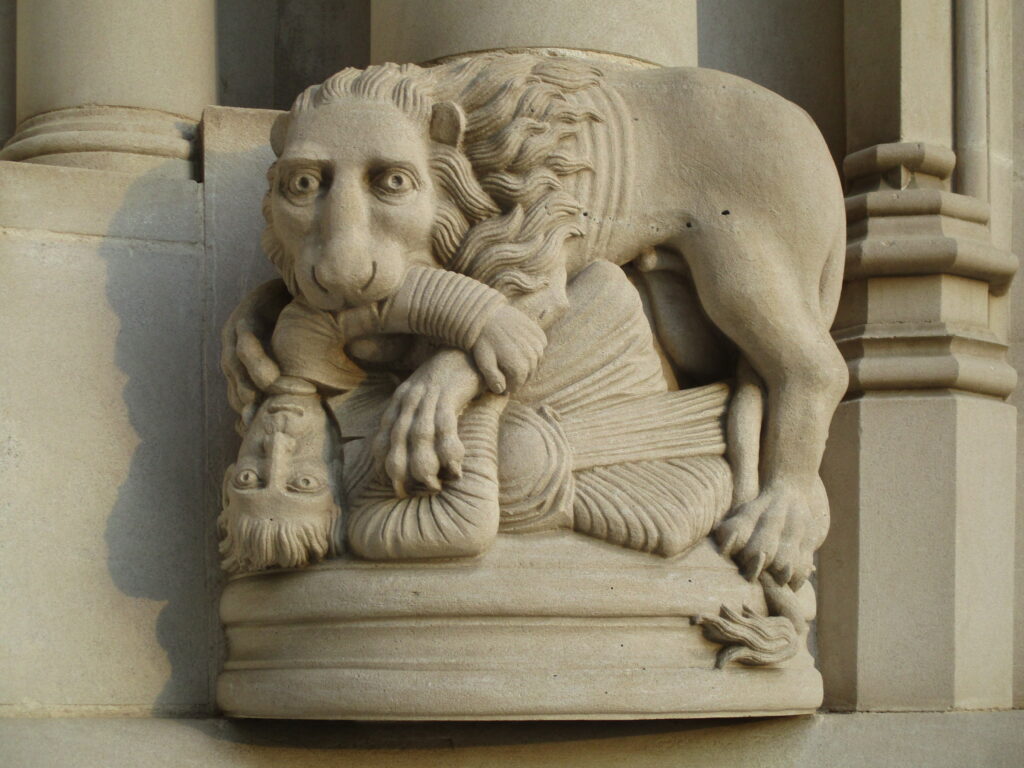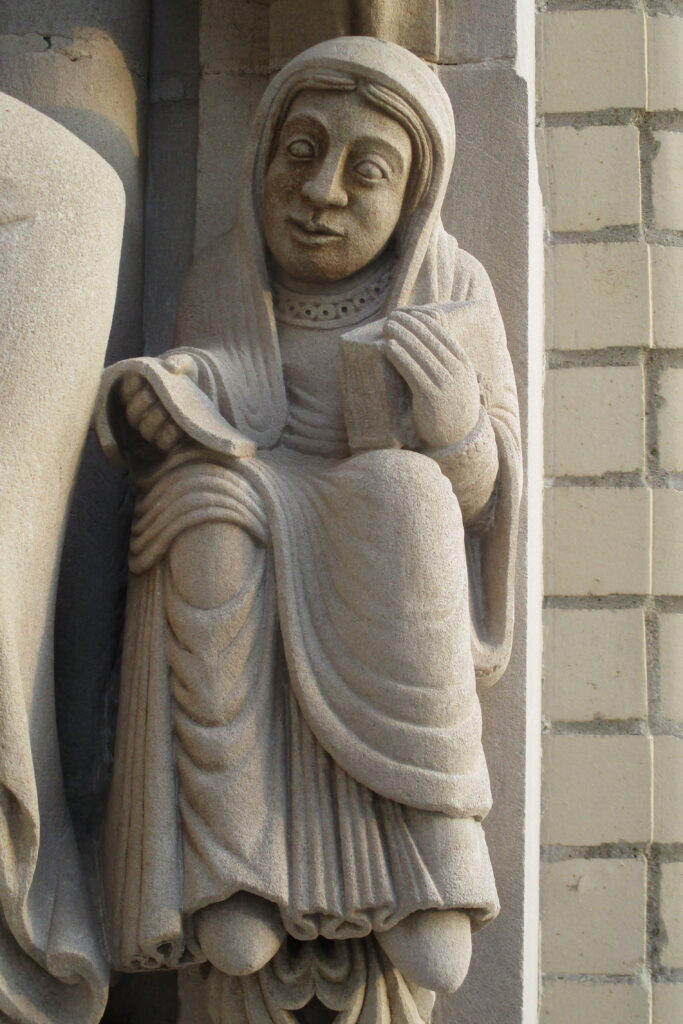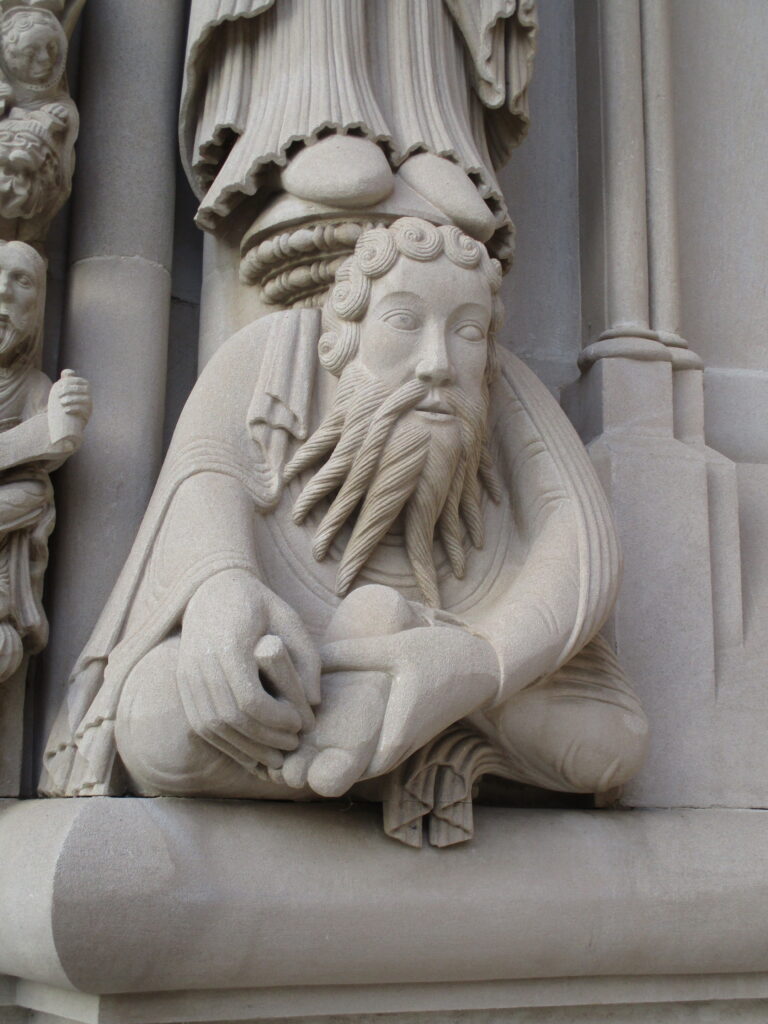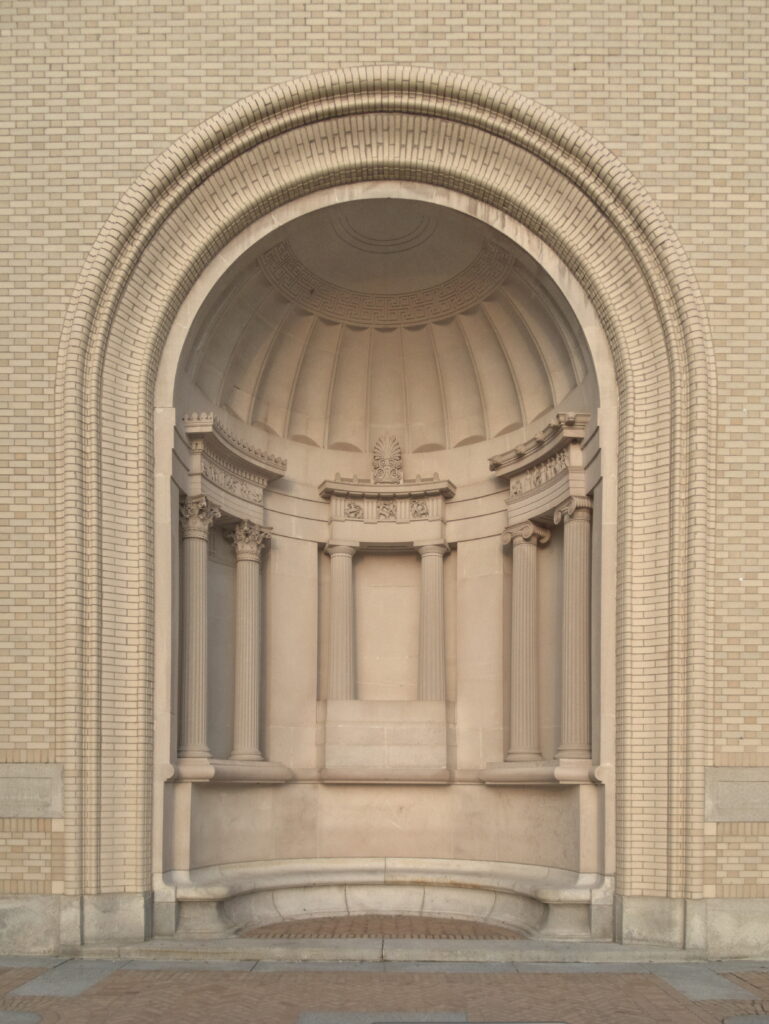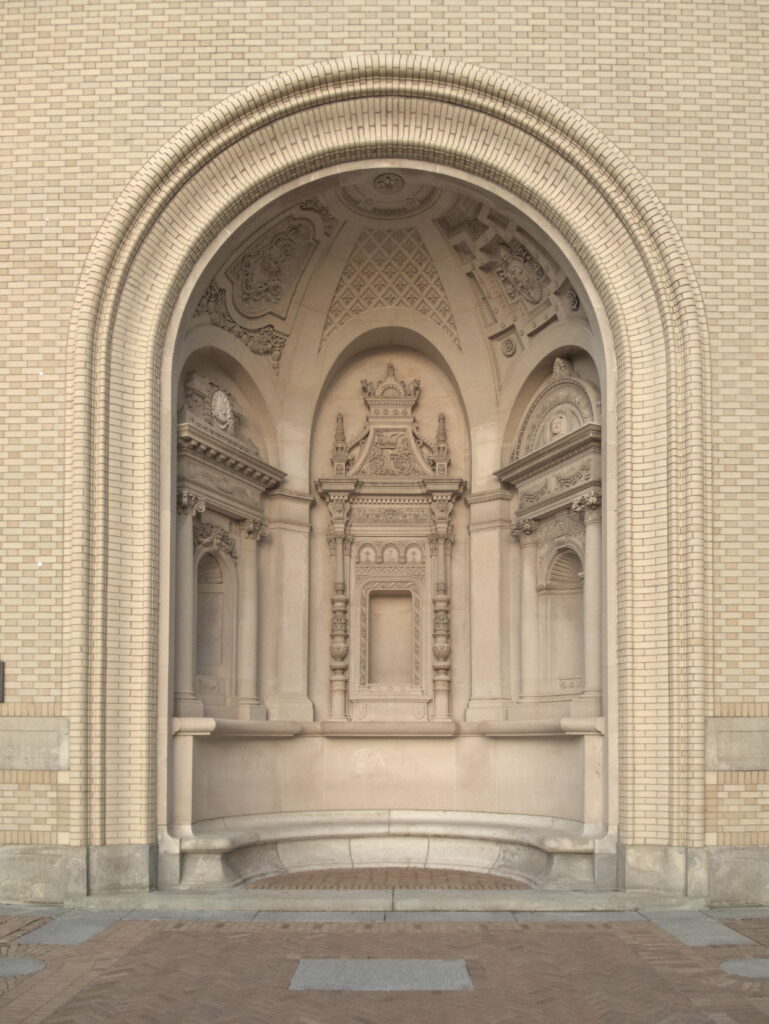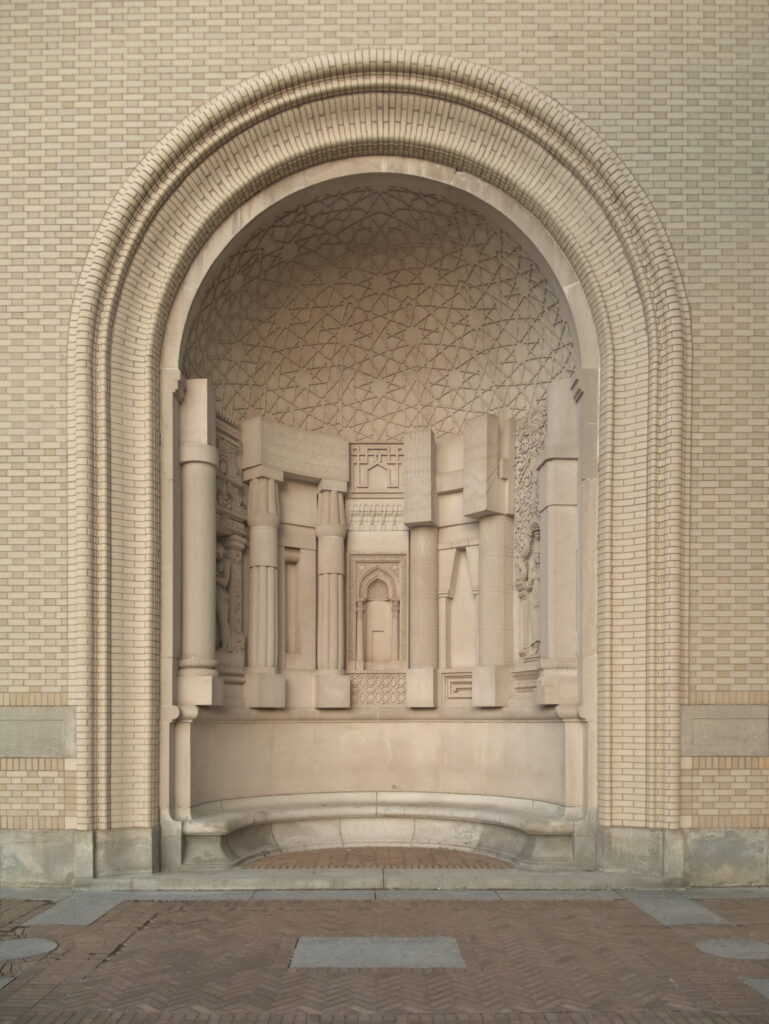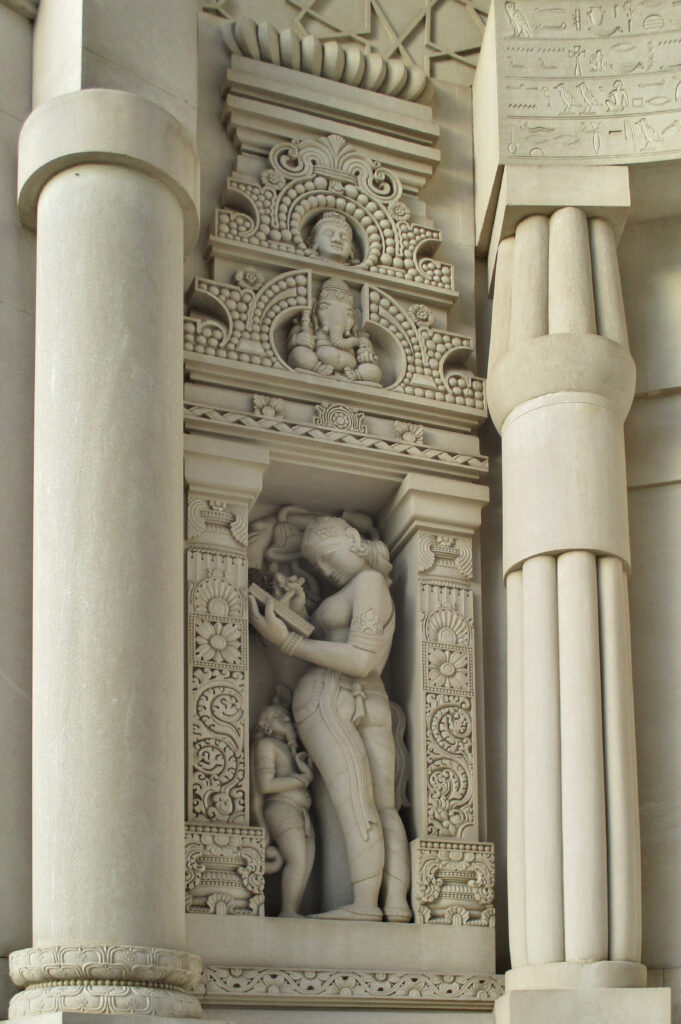
Albert Spahr of MacClure & Spahr designed the chapel, the administration building, and the gatehouse for the Homewood Cemetery in a Perpendicular Gothic style. (Mr. MacClure had already died, but his name remained at the head of the firm.) The effect is to make us think of our ideal image of an English village.









The doors have impressive iron hinges and pulls.


Here is an extraordinarily rare thing: a tower clock that is keeping accurate time.

The administration building.



The gatehouse appears to have been expanded by a third on the right; the seam is only just visible in the front, but much more obvious in the rear.


Cameras: Sony Alpha 3000 with 7Artisans f/1.4 35mm lens; Canon PowerShot SX150 IS.








